
Oracle Candidate Experience
Candidate Experience is an external candidate facing product in Oracle Recruiting Cloud. Oracle Senior Vice President for Applications Development, Chris Leone, announced Oracle Recruiting Release 13 at Oracle Open World 2017, San Francisco.
Here is Chris Leone presenting my work Oracle Recruiting Candidate Experience - Template 1 - Search/View Jobs Flow.

Background
Inherited from Taleo CE, Candidate Experience is part of the ORC (Oracle Recruiting Cloud) products where companies can build their career sites that is device-responsive; targets to provide a fantastic experience to job applicants. Back to the old days, when Taleo dominated the majority of talent acquisition market for nearly 2 decades, it was an unrivaled powerful tool. Now the giant slowed down its paces and didn’t catch up with the surging demands of our age.
Enterprises need to attract the talent with its appealing company branding content (culture, values, people etc). Candidates need a simple, engaging experience to search jobs and submit a job application. It should be simple enough that candidates are not required a Login ID/Password; candidates revisiting the site can identify themselves by utilizing a web-URL shared to their email addresses; Source Tracking that is robust enough to identify the source of a job-application. This is why we are here.

Objective
Design Candidate Experience Template-1 with search, apply, offer flows.
Design Theme Editor where customers can choose desired template and theme site style, logo, image and text.
Roles
Product Design Lead
I led a design team consisting of a Sr. Product Designer. We collaborated closely with the Product Managers, Dev Team, QA and Marketing team. As the design team lead, I was responsible for validating that each design solution met business requirements as well as user needs.
User Research & User Testing
We began with user interviews to understand the entire job search process from the point of view of candidates. We did a great deal of in-person testing as well as early adopted customer testing. By testing early and often, we were able to make informed design decisions and change direction as needed.
UX Design
I centered my approach around the user’s need for finding job search results tailored to their unique needs. The app is designed to deliver a frictionless experience that makes the process of finding/applying jobs quick and easy.
Responsive UI Design
When designing the best interface template for thousands of companies’ career site within a responsive web framework, I leveraged the simple, fashion-forward layout, delivered a light, yet accommodating UI that was responsive to all devices. As many of the target users would be accessing the site on mobile devices, the site had to be a breeze to use.
Shipped Product - Our Client Customized Live Site
Click the screenshot below to experience the live site product: Search Flow and Apply Flow
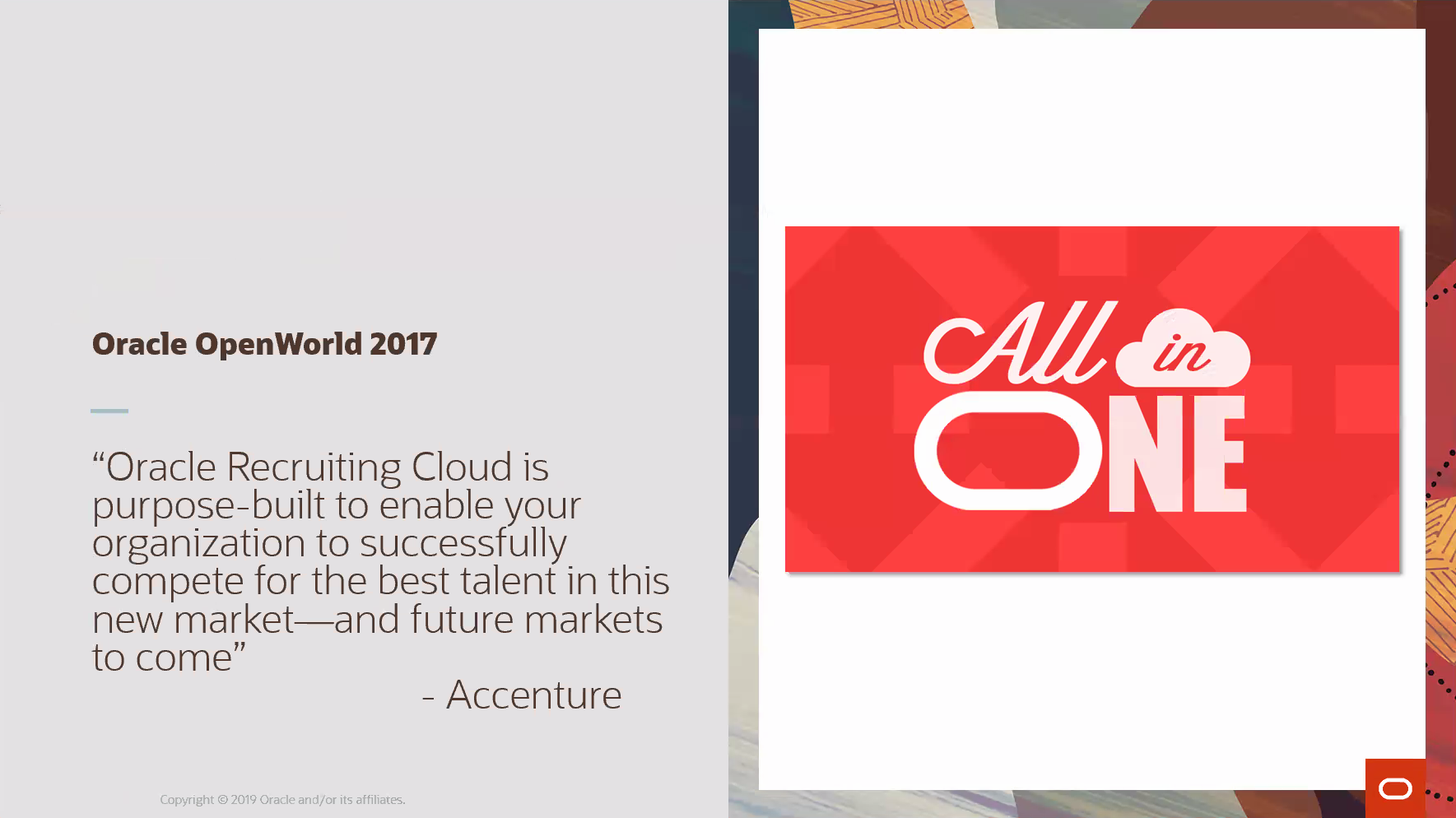
Competitive Analysis
Our competitive analysis involved several attributes comparison listed below. All three competitors have career site builder which are mobile responsive.

Jibe career site solutions focus on the highest converting channels and connect with candidates more efficiently. It makes job searching more intuitive.
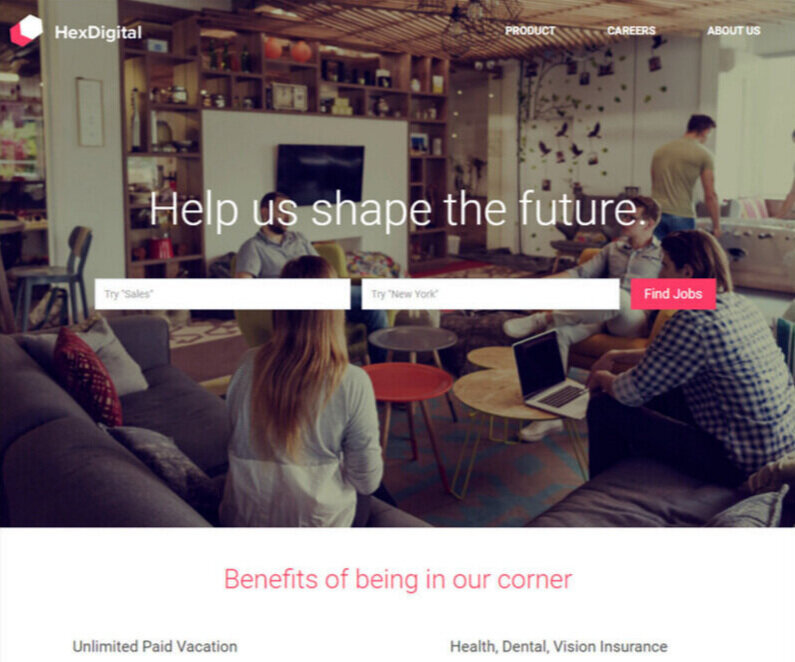
SmashFly help Brand Transformation easily. It builds beautiful career sites with purpose, from search through application. It supports Chat in real-time with 1:1 personalization from content to landing pages to chat to jobs based on site behavioral data and demographics.

SAP SuccessFactors addresses global recruiting needs which allow perate a single global career site across multiple brands and languages.
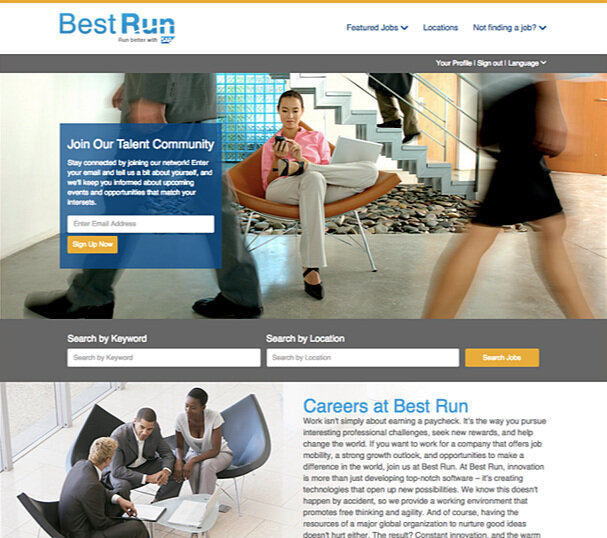

User Research
Goals
Which resources they turn to for job search - online, offline, mobile
Step by step process – what is their mental model vs. what actually happens?
Role of networks in learning about jobs
How they apply, what kind of dialogue or communication they expect
What can we learn from adjacent experiences – e.g. online dating, product/service search, etc.
Methodology
We conducted ethnography with a total of 15 candidates. Each interview took place in their home environment, where we were able to see what online and offline resources they used. Each interview included the following:
Overview of their work history
How they think about work – what their motivations are for searching
Their current search techniques
What resources they use (e.g. online, offline, social, etc..)
Pain points and delights in their current process
Hopes for the future – brainstorming better solutions
Our Participants

Through 15 interviews, we documented each participant’s candidate experience. Here is what Heather said about hers.

Key Insights
I feel invisible in the process.
I feel like I’m wasting my time with online applications.
I want to be able to more fully express who I am with my application.
I want to find a job that’s a true fit for my skills and values.
I want a deeper understanding of the company and the people who work there.
I want to be able to update and access my applications wherever I am.
Emerging Candidate Modalities
The research revealed two key spectrums that determined people’s job search approaches.

Four Modalities for Approaching Job Search

Then we analyzed the characteristics, pain points and opportunities for each Modality. Later the 4 modality evolved to 4 different personas.

We also built a complete Candidate Profile for each participant so when we need to refer a certain participant’s information we have it ready in our hand.

Taleo CE geared toward Targeted/Process-Oriented modality. It brings opportunities for ORC.

Design for a Candidate-Centered Process
The research revealed that candidates’ overarching needs span the spectrum of the current application process.

Further concept ideas were proposed toward every stage of mental model.

Sketching Flows
In the beginning of the gathering requirement stage, we faced two options: one, candidate Sign-on as it was how Taleo CE handled before. Second, no requirement for a Login ID/Password. With a deep understanding of candidate-center design, this concept directly extracted from our user research. After a few rounds of paper prototype user testing, we gave up Sign-on and chose No-Login ID/Password. Candidates revisiting the site can identify themselves by utilizing a web-URL shared to their email addresses.
The Search Flow sketched on the white board showed we worked with 3 Product Managers mapping out candidate experience with internal and external Sign-on.

Sketching Wireframes
Iteration - 1
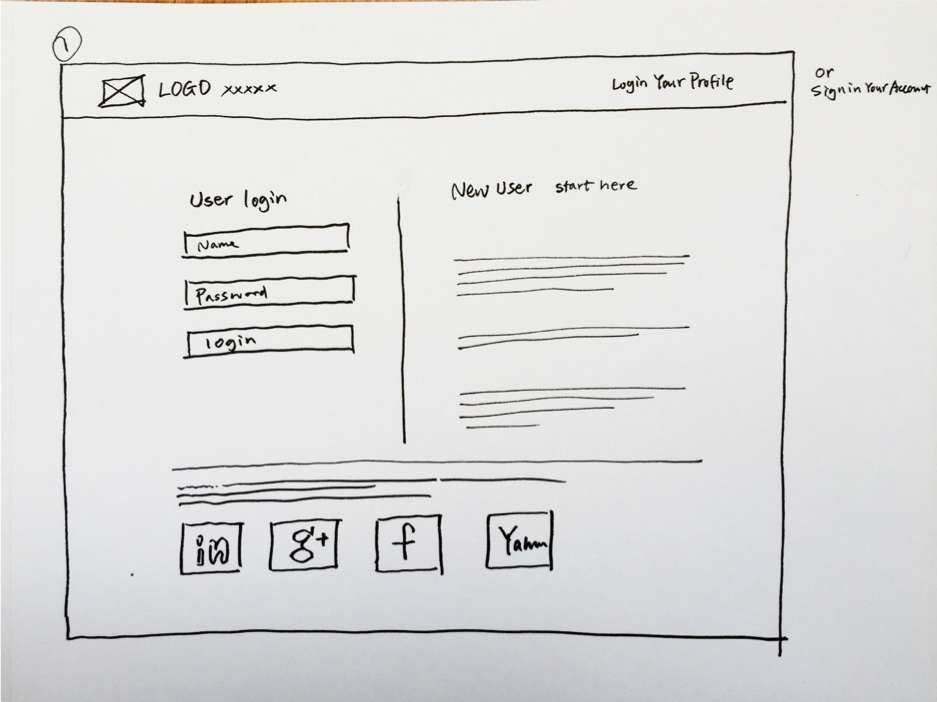
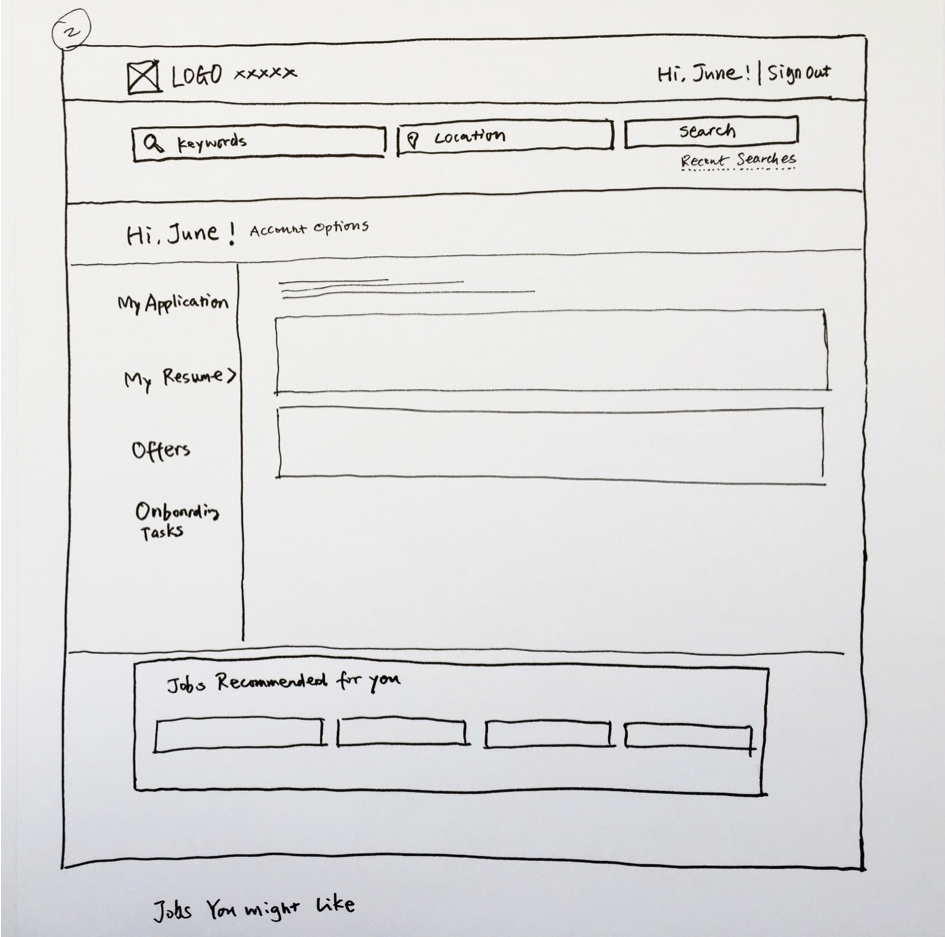
Iteration - 2




High Fidelity Mockups










Flow Chart

Prototype - Chatbot
User Testing
CE Funnel Report after Going Live




